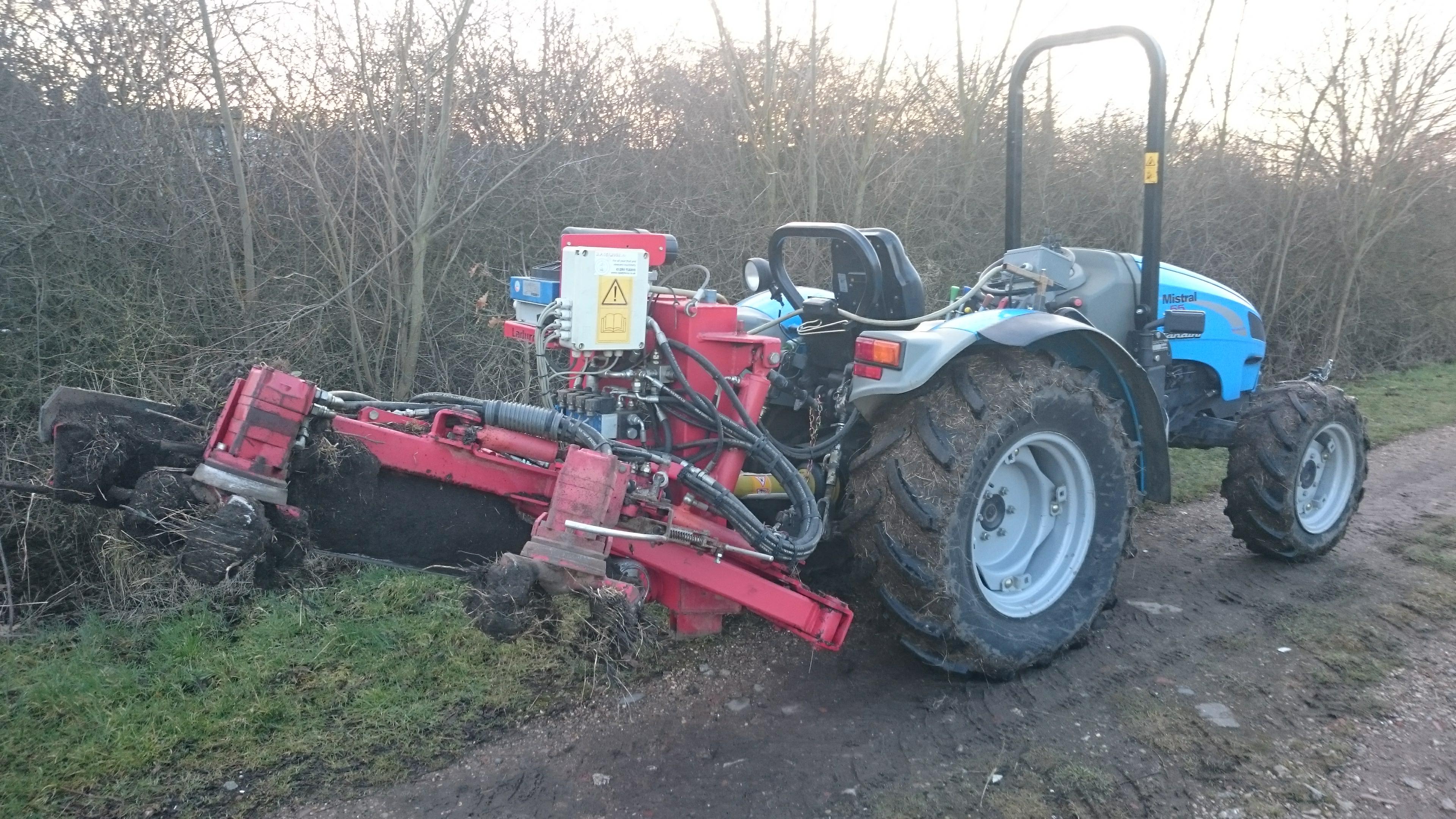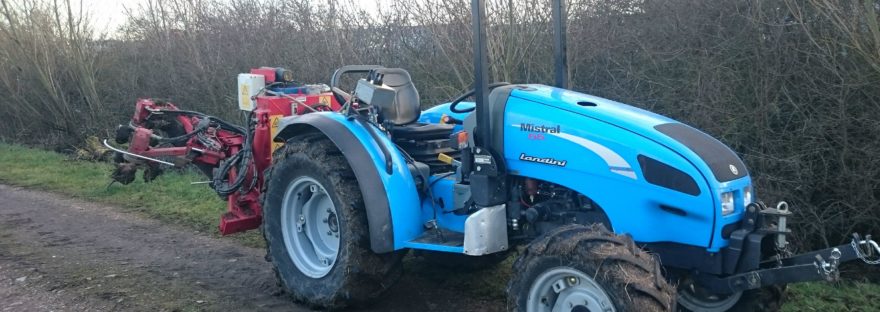Time is always a precious commodity. Weeding has stolen many days each year. Our first 2018 investment in a Landini tractor and ladurner cultivator will buy back this time. First trials show an excellent job, rotovating the weeds in the area close to the plants creating an organic mulch of the top soil. The first pass of the machine has cut the shallow lateral roots of the plants and we will have to wait to see if this creates any detrimental impacts. It may be the plants compensate by establishing deeper roots, which could be positive in the long run to help sourcing a deeper water table in dry summers.

Adopting the Ladurner cultivator raises some thoughts regarding the sea buckthorn fly (Rhagoletis batava). It can destroy up to 50% of the crop, and although not seen in the UK yet has expanded across Asia and Europe. As we are determined to maintain our organic form of growing sea buckthorn, the option of using chemicals is not available to us. Netting all the plants offers a first line of defence, but over a large area can netting offer a 100% option?
The sea buckthorn fly lay eggs which become larva which overwinter in the soil beneath the plants. One suggestion is to create a barrier on top of the soil preventing the larvae from penetrating the soil and leaving them exposed to the elements and insect predators. The Landini will create a soft open soil under the plants for these larvae to burrow into, so our mechanical solution to weeding may solve one problem and create a worse one. As part of our trials we will look at increased autumn cultivations after the egg hatching season as this might kill fragile larvae in the soil.
Moving away from the farm, this week has revealed research on the potential hazards of consuming ultra-processed foods. Consumer demand for convenience and the food industry response needs to always focus on the fact that food is a primary means of maintaining health. The quality of ingredients and how they are treated impacts on the nutritional value of any food to benefit the end consumer.
Ultra-food processing is extreme but the issue of nutritional quality is something we need to focus on in developing our sea buckthorn crop, harvesting and how it reaches our consumers.
Our field management must cross check on sustainability. How we can reduce bought in inputs, reduce our impact on the environment – but more than that, maintain and improve the biodiversity around us. This will provide a good soil. A good soil will deliver a healthy plant and the necessary nutrients and trace elements that improve fruit quality.
Harvest needs to be fast and clean. The concept is simple but ensuring quality comes from being continually critical of the process. With 2018 being our first harvest quality is both our vision and our challenge.

